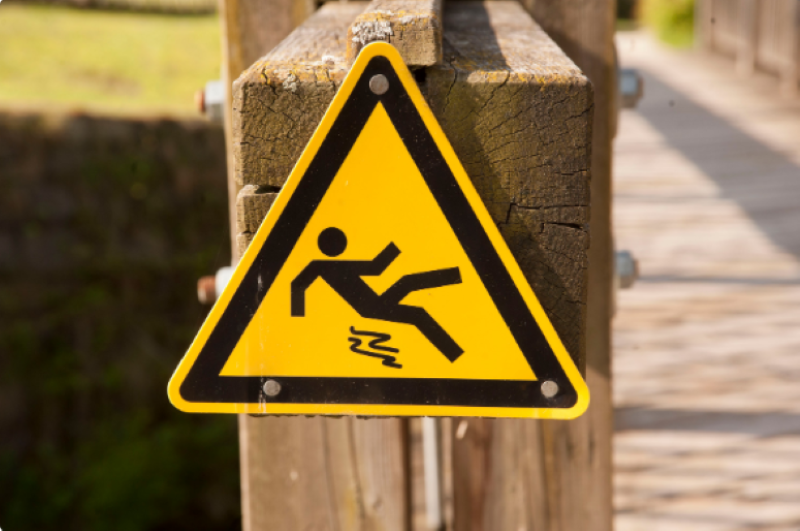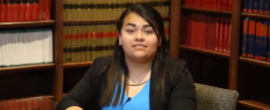Slip and Fall Terminology and What You Should Know About Your Case
Written by Cooper & Friedman PLLC on March 3, 2023

When it comes to slip and fall cases, there always seems to be many roadblocks that are put in the way between you and sufficient compensation. Arguments over whose fault it really was, how it really happened, whether or not the victim is lying or just trying get free cash – there are a lot of factors to consider and a lot of slip and fall terminology that you should know before deciding or right after deciding to take your slip and fall case to court.
If you’re not sure whether your case will cut it or not, or if you’re struggling with insurance regarding slip and fall accidents, contact Cooper and Friedman for a free case consultation and start the process to recover expenses that resulted from the negligence of a property owner.
6 Factors to Consider for a Slip and Fall Case
1. Statute of Limitations
The statute of limitations in Kentucky – which outlines the amount of time you have from the date of the injury to make a case – for slip and fall injuries is 1 year for physical injuries and 2 years for property damage. That’s not a lot of time in the scheme of law, and is a very important detail to consider when you first get into a slip and fall accident. That means a year to consult, gather evidence, get your doctor’s visits in, and make your case – after that, property owners will ask to dismiss the case and most courts won’t hesitate to do so. Even with the 2-year property damage limitation, it’s always best to file a claim ASAP so that there is less opportunity for accusation of damage outside the accident. You can learn more about Kentucky’s Statute of Limitations on our blog!
2. Proof of Negligence
Perhaps one of the most difficult case factors is the fact that there must be proof of active negligence on the property owner’s part. Active negligence can look like:
- The owner knew about the hazard but failed to address it at all.
- The owner knew about the hazard and addressed it, but in an inadequate manner.
- The owner caused the hazard that led to injury themselves.
- The owner did not know about the hazard but, with reasonable care, should have.
This does protect those responsible for addressing the hazard by allowing time for them to take measures to fix or clean up the hazard – i.e. a jar of oil falls off a shelf in a grocery store and someone slips on it while employees retrieve a hazard sign and/or cleaning supplies.
3. Open and Obvious Doctrine
One defensive measure that property owners often call on is the “Open and Obvious Doctrine.” This states that “if the hazard or condition would have been open and obvious to a reasonable person, then the landowner is not liable (or may be less liable) for failing to fix the condition or warn the person who was injured.” This rule is highly debated in court because of the subjective nature of what might be ‘open and obvious’ to a person. It could also possibly be a factor in the decision of the next term, too – comparative negligence. Find a more detailed definition of the Open and Obvious Doctrine here.
4. Comparative Negligence
Sometimes, fault isn’t always one way or another and it can be proven that the negligence isn’t fully on the property owner. Due to inattentiveness, carelessness, or disregard of property lines, comparative negligence takes into account the amount of fault from each party and applies it to the final settlement. Much of the time, this is spoken about in terms of percentages, so if the victim is 50% at fault of a $20,000 settlement, then the property owner will only need to cover $10,000. Find a more detailed definition of comparative negligence here.
5. Injury Timeline
As mentioned in the statute of limitations, there is a timeline to making a slip and fall case. Injuries don’t always present themselves on our timeline, but many times, we don’t know what we don’t know – meaning, something could be off but, because we aren’t all doctors, we wouldn’t notice until it caused us physical pain. It’s important to get checked out right away if the slip and fall was serious enough! Even if you have an inkling that something is off or feels weird, it could be a pivotal factor in a future lawsuit over an expensive surgery. An immediate doctor’s visit is a good indication that you aren’t faking an injury, too, since it shows urgency instead of triviality.
6. Evidence
Evidence is of the essence, as we’ve explained. Other evidence besides diagnoses and statements of doctors visits could include:
- Security Footage
- Accident Reports by Police, Firefights, EMTs, etc.
- Witnesses
- Maintenance Reports and Requests
- Work Leave Emails, Texts, and Other Communications
If you or someone you love has been injured in a slip and fall accident in the State of Kentucky and are in need of an experienced injury attorney, give the lawyers at the Cooper & Friedman law firm a call. The attorneys at Cooper and Friedman PLLC have over 50 years of combined experience defending the rights of slip and fall victims. Contact us with questions you might have or schedule a free case consultation with an attorney by calling 502-459-7555 today.

